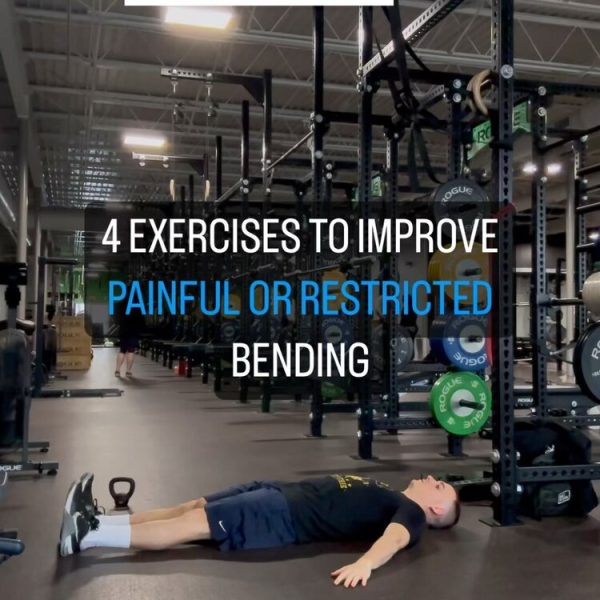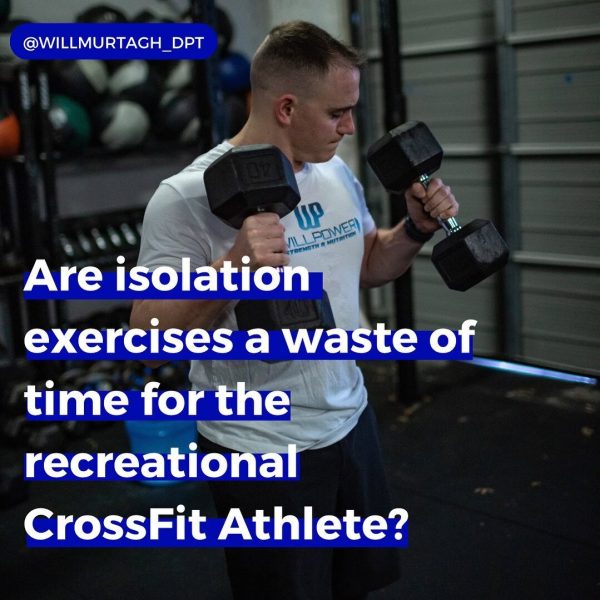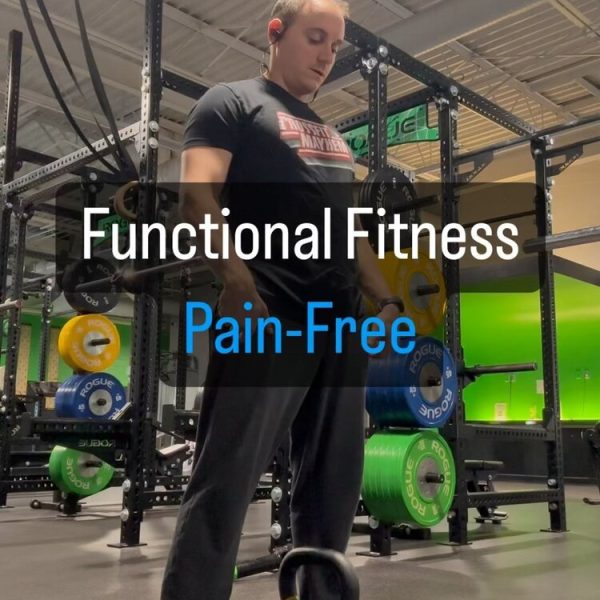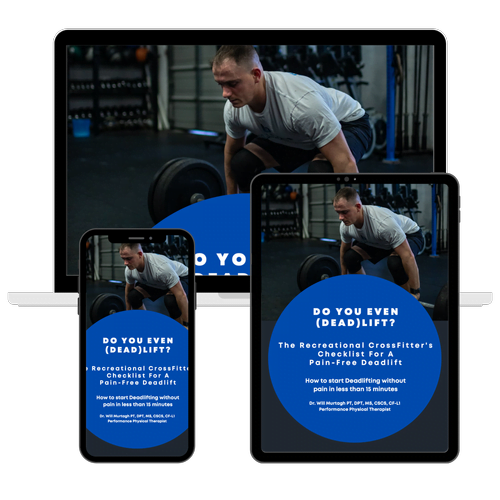Dr. Will Murtagh is a performance physical therapist and writer who helps Fitness Athletes elevate their fitness and train pain-free.
As an affiliate partner of various brands and sponsored content, WillPower Strength & Nutrition may earn commission on qualifying purchases at no additional cost to you.
Using Metabolic Conditioning to improve your health ultimately comes down to ensuring that your training is sustainable and that you are following a step wise progression in intensity and complexity with regards to the type of work that you are doing. So that you can adapt to the training, avoid burnout and limit excessive wear and tear on the major joints of the body.
Metabolic conditioning or the term metcon, has become a buzzword in the fitness industry and is often used to describe a style of workout that includes intense Aerobic exercise and a big adaptive response from the body.
Metcon workouts inside of a CrossFit training program aim to drive big improvements in work capacity and are a great way to do so given the high intensity nature of the sessions.
If you are reading this then there is a good chance that you love CrossFit training and the metabolic conditioning training that goes into it.
Personally, I have never experienced anything like the type of workout that CrossFit training can provide.
The combination of strength training, gymnastic skills work and energy systems development packed into a single session can pack a huge punch with regards to enhancing your current fitness level in as short a time as possible.
In addition, CrossFit training allows for those with the competitive itch to chase down victory in the quest to become the fittest on earth at the CrossFit Games.
A noble and challenging endeavor that can take years of dedicated focus and sacrifice. Both physically, mentally and socially.
But, there is also a chance that if you are reading this then you may have gotten into CrossFit training with different goals. Maybe you just want to be as fit as possible for everyday life? Maybe you are looking to drive some weight loss or build some muscle mass to look better naked?
You may have even began with specific goals of becoming the fittest on Earth but the grind of competing has taken a toll on your physical and mental health and you are ready to transition over to a style of training that prioritizes looking good, moving well and thriving.
Just like the my clients have in my 1:1 Pain-Free Performance Program where I take CrossFitters from in pain or dealing with injury to new fitness levels and sustainable long term CrossFit training.
Today, we are going to dive in to the principles of metabolic conditioning how you can design smarter sessions to not only get you as fit as humanly possible, but provide a framework to creating a sustainable training plan that meets you at your current fitness level and progresses with you.
Sustainable Training Principles
Before diving into the different types of metabolic conditioning and how to design CrossFit metcons for health, it is a good idea to review what makes up sustainable training.
I have written on this topic before in articles such as 3 Signs You Are NOT Training Aerobically, Four Ways to Transition From Training For Sport To Health
Sustainability is going to be a key factor when designing the workout of the day on many levels.
For starters, it is easy to maintain consistency in your training for a few days or weeks of high intensity training but aiming to do so long term is a one way ticket to burnout and even injury.
Instead you want to train with different intensities throughout the week, month and year to allow your body to recover.
Sustainability within metcon workouts is just as important from a training adaptation standpoint. When training sessions are turned into HITT workouts with no regard for sustaining power or the rate of work being done the body no longer is adapting to the intense exercise it is simply learning to survive it.
You see this often in the CrossFit community where people are excited to work hard and will see initial results that are quickly followed with a plateau since no attention was put to how the body was adapting to the work being done. Eventually leading to burnout and people moving away from CrossFit training.
Repeatability
Emphasizing repeatability allows you to ensure that your metabolic conditioning is being kept sustainable. Simply put, if you cannot repeat a bout of work then you are training unsustainably and the work you are doing is closer to competing.
Repeatability can be ensured by using rest periods that are long enough to allow for full recovery and using movements or a set number of reps that allow for a maintenance of work both interset and intraset.
Slow To Fast
Moving from a type of workout that emphasizes lower intensity, Aerobic exercise and moves into high intensity Anaerobic training over time will ensure you are not fast tracking your progress and developing compensations along the way.
Moving from slow to fast metabolic conditioning develops your cardiovascular system and muscles and lungs to adapt to the work you are doing properly to set a foundation to build from your current fitness level.
Long To Short
This goes hand and hand with principle two, longer workouts lend themselves to slower paces and fall into the category of Aerobic exercise over the more intense Anaerobic exercise.
Using longer slower paced CrossFit metcons first and progressing down to shorter faster paced ones over time allows you to learn pacing and develop Oxidative pathways prior to increasing pace where recovery will become harder during rest times.
Move From Simple To Complex Exercises
Rushing to use advanced exercises is a one way ticket to drop sustainability through the floor. Being a member of the CrossFit community, you see athletes competing at the highest level and all of them are doing movements like Muscle Ups, Dumbbell Thrusters and Wall balls inside of their metabolic conditioning.
It can be tempting to rush to doing so as well. The problem with this is that you may not have developed the skill level necessary or the muscle endurance needed to have complex exercises like these in workouts where fatigue is playing a large role in your ability to sustain work just yet.
Using a Barbell Snatch for a beginner in a metcon may make the session an unsustainable type of workout. A better option would be to keep the movement pattern but use Kettlebell Swings instead which are more easily sustained rep to rep as they are less technical.
You can read more on developing skills for CrossFit in this article, The Best Training to Improve Gymnastic Skills In CrossFit
Progressing Metcon Workouts For Health
The primary concern when designing your metabolic conditioning for health is to prioritize a gradual build in complexity. While also recognizing that if you are training with the specific goals of looking better, feeling great and being as fit as you can for everyday life there is no inherent need to take the next step in this progression.
If you desired, you could spend your whole life in step one of the following and reach every fitness metric you are chasing related to health. such as weight loss, building muscle mass, avoiding heart disease, increasing insulin sensitivity, and improving mental health etc.
If you do choose to progress through you will see that each step in this progression adds a layer of complexity to your metcon training.
Cyclical Work
Cyclical training is the first step in the progression because it is the simplest form of aerobic exercise that you can do. But, this does not mean however, that it is less effective than more complex variations of training. It simply means that relatively speaking, Cyclical work requires less skill or muscle endurance to make the workout of the day sustainable then the subsequent forms of metcon workouts. Thus, it is a great starting point.
Cyclical work is defined as work that is quite literally cyclical. The work is done in a fashion that is repetitive in nature for a specific time domain. It is typically done in the form of running or on a machine of some sort.
For example you may choose to use the Concept 2 Erg, Assault Bike, Ski Erg or Assault Runner to perform steady state movement as a part of metcon workouts.
You can also use any of these machines for high-intensity work. Simply increase the pace you are moving at.
Cyclical workout example from my 1:1 Pain-Free Performance Program.
MAP 7
3 sets @ sustained effort
10 minutes for total calories
-Rest 7 minutes-
Circuit Training
Circuit training is the type of workout that most people in the CrossFit community would think of when they think of metcon workouts.
This type of training session includes alternating between different exercises in a circuit fashion for a set number of rounds or as a part of AMRAP workouts.
Circuit training can involve any number of exercises that include strength training, gymnastics skills or cyclical implements like the ones mentioned above.
The main issue that arises in circuit training is that CrossFitters will select movements that they earned the right to perform under fatigue through a foundation of skill development, building muscle endurance and Aerobic base building. Thus, the session moves from sustainable work to unsustainable work as well as lack luster adaptation, cranky joints and poor long term progress.
With Circuit training you want to prioritize simple movements first like Kettlebell Swings over Barbell Snatches, slow to fast paces and use a longer time domain before a short time domain.
Circuit training workout example from my 1:1 Pain-Free Performance Program.
2 sets
4 rounds for time @ sustained effort
10 Kettlebell Swings
10 Wall Balls 20# to 10’
Rest = Work
Chipper
Once a sufficient amount of time has been spent inside of Cyclical and Circuits you can look to the next step in the Metcon progression if you so choose.
Remember, there is no need to step forward in the progression if your specific goals are health and vitality related. The main reason you would want to move forward to each subsequent step in the metabolic conditioning with health related goals progression is variety, fun and increased challenge.
Chipper metcon workouts involve a set of exercises with a set number of reps per movement that must be completed before moving on to the next. The Chipper is deemed more advanced than Circuit training because unlike Circuit training, the muscle groups being worked on a specific exercise in a Chipper are not allowed recovery time unless work is stopped.
A level of knowledge around pacing and your current fitness level is required for these to be effective.
In Circuit training, working muscles are allowed to rest as you switch exercises. This is not the case in Chippers so sustainability is more difficult with muscle endurance being a potential limiting factor to maintaining work rate.
Chipper workout example from my 1:1 Pain-Free Performance Program.
4 sets
For time @ sustained effort
800m Run
30 Burpees
20 Dumbbell Thrusters
10 Bar Muscle Ups
Rest 8 minutes
Constant Variance
The last step in the Metabolic Conditioning progression is actually reserved for high level CrossFit Athletes.
This is because it challenges repeatability to a degree that is not needed for someone whose specific goals are health related.
I will review this type of metcon for both completeness and for the off chance that you have health goals and have spent ample time in the previous three steps. Building your current fitness level up to the point where you can make Constant Variance a sustainable endeavor.
Constant Variance is similar to Circuit training in that you will alternate from exercise to exercise for a set number of reps and rounds with multiple intervals. However, the difference is that each each time you begin an interval, the order of the exercises will change.
This challenges your bodies ability to learn the pace of the workout every time you begin a new interval which increases the demand on pacing and muscle endurance to keep the work as aerobic exercise and not unsustainable anaerobic exercise.
Constant Variance is a great way to push performance to new levels but you can see how this style of training may be unnecessary if you simply want to drive weight loss and avoid heart disease.
If you do decide to give Constant Variance a shot be ultra-critical in your ability to repeat efforts.
Constant variance workout Example from my 1:1 Pain-Free Performance Program.
5 sets
For time @ sustained effort
A 15 Goblet Squats 53# KB
B 15 Box Jump Overs 24″
C 15 Dumbbell Push Press 35#
D 15 Toes To Bar
E 5 Wall Walks
Rest 1:1
*Change order each set
Now that you understand the principles of sustainable training and the different types of metcon workouts you can begin to use them to improve your health with metcon training.
Making the switch from training for performance to training for health is one that many of us will make in our training lifetime.
Training to win is a noble endeavor, but one that cannot be maintained for long as what is required to reach peak for performance may take away from your physical and mental health.
In addition to the competitive window for peak performance being a fleeting one as you age.
But by using these principles you can effectively make the switch and optimize your current fitness level and health for years to come!













